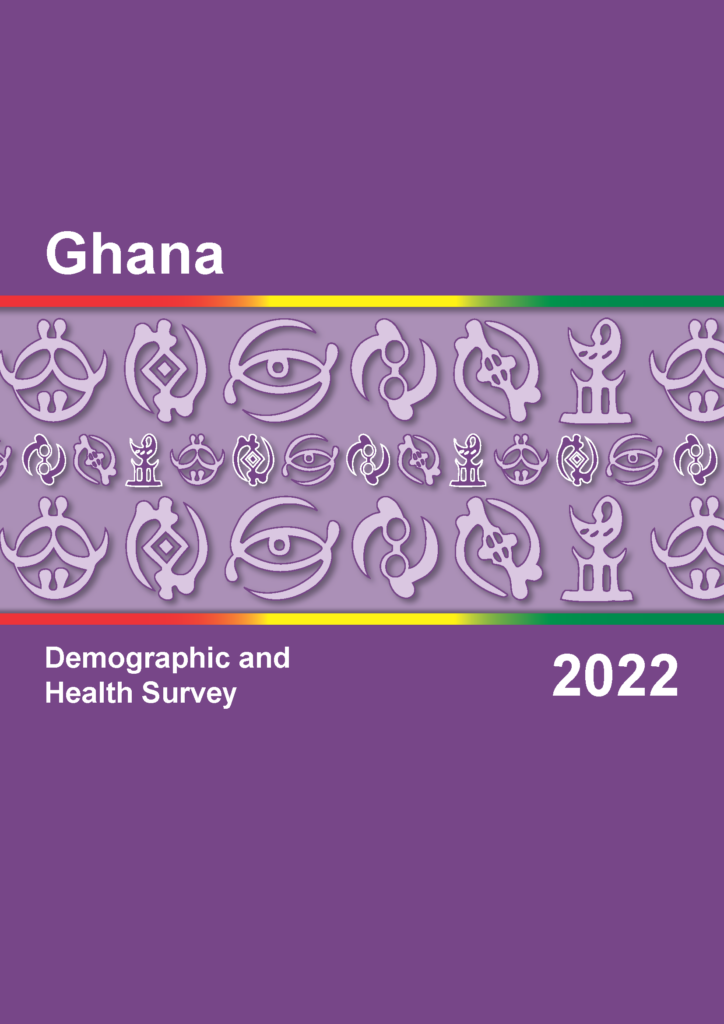Spotlight on Implementing Agencies: Ghana

In December 2023, The DHS Program welcomed visitors from Ghana who came to the office to finalize the report for the 2022 Ghana DHS. This post is one in a series of interviews with visitors to The DHS Program office.

Name, title, and organizations: Peter Takyi Peprah, Assistant Chief Statistician, Director of Methods and Standards, and Coordinator 2022 Ghana DHS, Ghana Statistical Service
Dominic Kwabena Atweam, Technical Officer for Strategic Health Information Systems, World Health Organization, Ghana Country Office
When was the first time you personally worked with DHS Program data?
PEPRAH: In 2002, I was part of the team that did the data analysis for the Ghana Service Provision Assessment. In fact, I reviewed the survey instruments, trained field officers, participated in field monitoring, quality assurance, and report writing. I have been working on household surveys in Ghana ever since, including DHS Program surveys, such as the 2003 Ghana DHS, the 2007 Ghana Maternal Health Survey (GMHS), the 2008 Ghana DHS, the 2014 Ghana DHS, the 2016 Ghana Malaria Indicator Survey (GMIS), 2017 (GMHS), 2019 GMIS, and of course the 2022 Ghana DHS.
ATWEAM: I used to be Head of Health Management Information Systems (HMIS) at the Ghana Health Service, so I worked with the 2008 and 2014 Ghana DHS data. In that capacity I used DHS Program surveys and normal routine health service data to generate annual reports for the health sector and for the country. I made sure the survey questionnaires produced the data that the health service needs. When the reports and data become available, it was my job to ensure they were used to support health programs and interventions in Ghana.
What is your favorite DHS chapter or indicator, and why?
PEPRAH: Adolescent health. In 2022 I made a presentation at the National Youth Authority Program (NYAP) conference of Ghana. I presented data on the youth from the population and housing census, and DHS Program surveys, including comprehensive knowledge about HIV/AIDS among young people age 15-24. It was interesting for them at that time to know that comprehensive knowledge about HIV/AIDS among the youth was going down. They were surprised to learn that we have these data on youth in Ghana.
ATWEAM: As a data person, I always try to look between the lines. I like SDG indicators, especially those concerning determinants of health that measure progress against SDG Goal 3 to ensure healthy lives and promote well-being for all at all ages.
What is your favorite DHS Program digital tool/way to access DHS Program data?
PEPRAH: GSS has created Statsbank, which includes more than 3 million census indicators for Ghana. It also includes an interactive atlas with small area estimations of some indicators, such as population with any type of disability. We plan on including GDHS data in Statsbank.
ATWEAM: STATcompiler. I love that. WHO also uses the Health Equity Assessment Toolkit (HEAT), which relies on DHS Program data, MICS, and census data.
What population or health issue are you most passionate about? Why?
PEPRAH: Adolescent health, especially nutrition.
ATWEAM: Adolescent health. Minimum dietary diversity, much of the population don’t meet it.
The 2022 Ghana DHS is the first DHS Program survey conducted in Ghana to collect information on minimum dietary diversity among women age 15-49. Minimum dietary diversity for women is defined as consuming foods from five or more of the following 10 food groups during the previous day: grains, white/pale starchy roots, tubers, and plantains; pulses (beans, peas, lentils); nuts and seeds; dairy (milk, cheese, yogurt, other milk products); meat, fish, poultry, organ meats; eggs; dark green leafy vegetables; other vitamin A-rich fruits and vegetables; other vegetables; other fruits. Overall, 50% of Ghanaian women consumed five of these 10 food groups during the previous day.
How do you hope the 2022 Ghana DHS data will be used?
PEPRAH: GSS is planning to disseminate the 2022 Ghana DHS data in all 16 of Ghana’s regions, so that regional health officials and local stakeholders can access the data to make decisions and design health interventions to improve the health and wellbeing of all Ghanaians.
ATWEAM: It’s important to package the data in different ways, such as fact sheets and summary reports, to make the key messages clear to policy makers and decision makers.
When not working, what is your favorite hobby, or your favorite place to visit?
PEPRAH: Watching football (Arsenal and Asante Kotoko [the porcupine warriors]) and visiting Safari Valley.
ATWEAM: I like to be at a beach or on the lake, as well as watching spy movies and talking to my girls (wife and two daughters).

